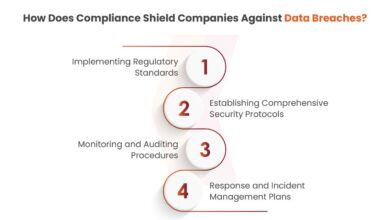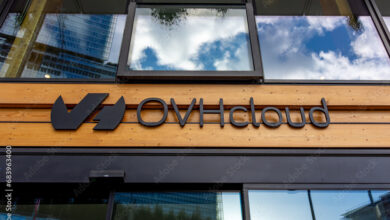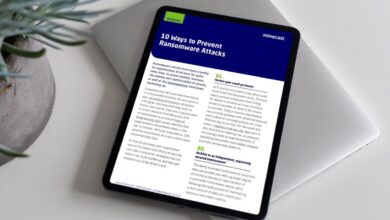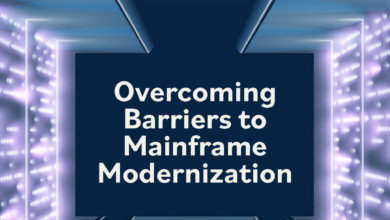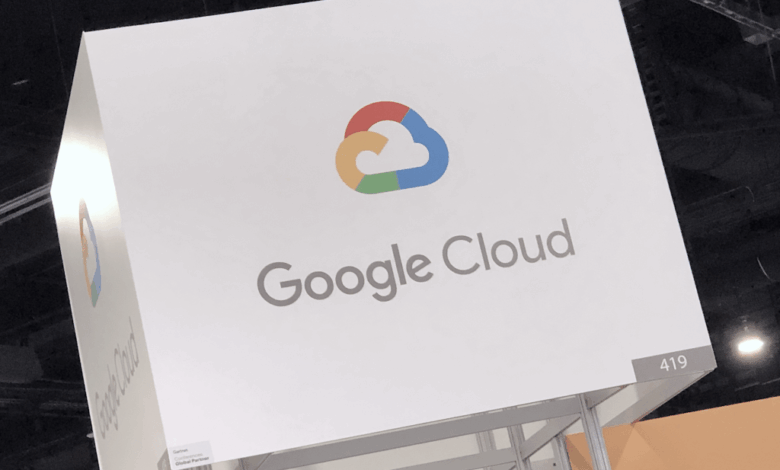
Google Acquired Cloud Companies One Security Umbrella
Google acquired cloud companies now come under one security umbrella, a massive undertaking with significant implications for both Google and its customers. This shift towards a unified security infrastructure represents a major strategic move by Google Cloud, aiming to enhance data protection and streamline security management across its diverse portfolio of acquired companies. It’s a complex story involving technological integration, enhanced security protocols, and a reassessment of the competitive landscape within the cloud security market.
Let’s dive into the details!
The consolidation of security under one umbrella promises increased efficiency and improved protection. But what does this mean in practice? How does Google’s unified approach compare to AWS and Azure? And what are the potential challenges and benefits for existing customers? These are some of the key questions we’ll be exploring as we unpack Google’s ambitious security strategy.
Google Cloud’s Acquisition Strategy
Google’s aggressive acquisition strategy in the cloud computing sector reflects a multifaceted approach aimed at strengthening its market position, expanding its technological capabilities, and accelerating its growth. By acquiring established companies with specialized expertise, Google Cloud aims to fill gaps in its portfolio and offer a more comprehensive suite of cloud services to compete effectively against industry giants like Amazon Web Services (AWS) and Microsoft Azure.Google’s rationale for these acquisitions centers on several key factors.
Firstly, it allows for faster market penetration and access to established customer bases. Secondly, it provides access to specialized talent and intellectual property that would take years to develop internally. Thirdly, acquiring strategically important technologies enables Google to enhance its existing cloud offerings and create innovative new services. Finally, these acquisitions often lead to the integration of complementary technologies, creating synergistic effects that enhance the overall value proposition of Google Cloud Platform (GCP).
Market Positions of Acquired Companies
The impact of Google’s acquisitions on the market positions of the acquired companies is generally transformative. Prior to acquisition, many of these companies occupied niche markets or were competing with a limited scale. Integration into GCP typically results in a significant expansion of their market reach, leveraging Google’s extensive global infrastructure and established customer base. For example, companies specializing in specific data analytics or security solutions often see a substantial increase in their customer adoption rate after being integrated into GCP’s broader ecosystem.
This integration not only expands their market reach but also elevates their brand recognition and credibility, enhancing their overall market value.
Technological Synergies Between Google Cloud and Acquisitions
The technological synergies between Google Cloud and its acquired companies are substantial. Acquisitions are often strategically chosen to complement GCP’s existing strengths and address specific weaknesses. For instance, the acquisition of companies with expertise in specific areas like data analytics, security, or artificial intelligence (AI) directly enhances GCP’s capabilities in these crucial domains. These synergies are often realized through the integration of technologies and the sharing of best practices, resulting in improved performance, enhanced functionality, and the creation of new, innovative cloud services.
The combined expertise allows Google to offer more comprehensive and integrated solutions to its customers.
Timeline of Significant Cloud Acquisitions by Google
Understanding Google’s acquisition strategy requires examining a timeline of significant acquisitions. While a complete list would be extensive, some key acquisitions highlight the strategic direction:
While precise dates and financial details of all acquisitions are not always publicly available, a general timeline illustrates Google’s consistent investment in expanding GCP’s capabilities through strategic acquisitions.
| Year (Approximate) | Acquired Company | Key Technology/Area |
|---|---|---|
| 2018 | Looker | Business intelligence and data analytics |
| 2019 | Citus Data | Database scaling and management |
| 2021 | Actifio | Data management and protection |
| 2022 | (Several smaller acquisitions focused on specific technologies) | Various areas, including AI, security, and developer tools |
This is not an exhaustive list, but it represents a sample of significant acquisitions showcasing Google’s focus on enhancing its core cloud offerings through strategic acquisitions.
Google’s consolidation of its acquired cloud companies under a single security umbrella is a huge step, but managing the sprawling landscape of cloud services remains a challenge. This is where solutions like cloud security posture management (CSPM) become crucial; check out this insightful article on bitglass and the rise of cloud security posture management to learn more.
Ultimately, a unified security approach, aided by tools like Bitglass, is essential for Google to effectively protect its diverse cloud infrastructure.
Unified Security Infrastructure
Google Cloud’s acquisition strategy has resulted in a diverse portfolio of cloud technologies. To effectively manage and secure this expanding ecosystem, Google has implemented a unified security infrastructure designed to provide consistent protection across all acquired companies. This approach not only simplifies security management but also enhances the overall security posture of the entire Google Cloud platform.The core of Google Cloud’s unified security infrastructure rests on a multi-layered approach, combining robust security controls at the network, platform, and application levels.
This holistic strategy leverages Google’s extensive experience in building and securing large-scale systems, adapting its best practices to the unique needs of each acquired company.
Components of Google Cloud’s Unified Security Infrastructure
Google Cloud’s unified security infrastructure comprises several key components working in concert. These include advanced threat detection and response systems, data loss prevention (DLP) tools, identity and access management (IAM) solutions, and a comprehensive security information and event management (SIEM) system. The infrastructure also integrates seamlessly with Google’s existing security operations centers (SOCs), enabling proactive monitoring and rapid response to potential threats.
Furthermore, the infrastructure incorporates automation capabilities to streamline security tasks and reduce manual intervention, minimizing human error and enhancing efficiency.
Protection of Data Across Acquired Companies
The unified security infrastructure protects data across different acquired companies through consistent application of security policies and controls. For instance, all acquired companies are mandated to adopt Google Cloud’s IAM framework, ensuring granular control over access to sensitive data. Similarly, Google’s DLP tools are deployed to monitor and prevent data leaks, regardless of the specific technology stack used by the acquired company.
The centralized SIEM system provides a single pane of glass view of security events across the entire Google Cloud ecosystem, enabling rapid identification and response to security incidents, regardless of their origin. A hypothetical example would be a newly acquired company specializing in healthcare data. Upon acquisition, this company’s data would immediately fall under the protection of Google’s HIPAA compliant infrastructure, including robust encryption, access controls, and audit trails, meeting regulatory compliance requirements.
Google’s consolidated cloud security is a big deal, offering a unified approach to protecting diverse platforms. This improved security posture is especially relevant when considering the rapid development cycles enabled by platforms like Domino, as discussed in this insightful article on domino app dev the low-code and pro-code future. Ultimately, strong security is paramount, and Google’s move strengthens the overall security for applications built on their cloud infrastructure.
Best Practices for Securing Cloud Environments Post-Acquisition
Google implements several best practices post-acquisition to ensure a seamless and secure integration. These include thorough security assessments of the acquired company’s infrastructure, rapid migration to Google Cloud’s secure platform, and comprehensive employee security training. Furthermore, Google prioritizes the implementation of automated security controls to reduce human error and enhance the overall security posture. Regular security audits and penetration testing are conducted to identify and remediate vulnerabilities proactively.
Finally, Google fosters a strong security culture within the acquired company, emphasizing the importance of security awareness and responsibility at all levels. This includes regular security awareness training and clear communication channels for reporting security incidents.
Hypothetical Security Architecture Diagram for a Newly Acquired Cloud Company
Imagine a hypothetical scenario involving a newly acquired company, “Acme Corp,” specializing in financial services. The diagram would illustrate Acme Corp’s existing infrastructure (servers, databases, applications) connecting to Google Cloud Platform (GCP) via a secure VPN. Key security components would include:* VPN Gateway: Establishing a secure connection between Acme Corp’s network and GCP.
Firewall
Filtering network traffic to and from GCP, blocking unauthorized access.
Cloud Identity and Access Management (IAM)
Controlling access to GCP resources based on roles and permissions.
Cloud Security Command Center (Cloud SCC)
Centralized security monitoring and threat detection.
Data Loss Prevention (DLP)
Preventing sensitive data from leaving the secure environment.
Cloud SQL
Securely hosting Acme Corp’s databases within GCP.
Cloud Armor
Protecting applications from DDoS attacks.
Virtual Private Cloud (VPC)
Isolating Acme Corp’s resources within GCP.This diagram would visually represent the integration of Acme Corp’s infrastructure into Google Cloud’s unified security infrastructure, showcasing the layers of protection implemented to safeguard sensitive financial data. The diagram would emphasize the seamless transition and enhanced security posture achieved through Google Cloud’s comprehensive security controls.
Impact on Customers

The unification of Google Cloud’s security infrastructure following its acquisitions presents a significant shift for its customers. This consolidated approach promises streamlined security management and enhanced protection, but the transition also presents potential challenges that require careful navigation. Understanding both the benefits and drawbacks is crucial for customers to fully leverage the improved security landscape.The primary benefit for customers is a simplified security posture.
Previously, managing security across multiple acquired cloud platforms meant dealing with disparate systems, policies, and tools. This complexity increased operational overhead and potentially created vulnerabilities due to inconsistent security practices. The unified security umbrella eliminates these inconsistencies, offering a single pane of glass for monitoring and managing security across all Google Cloud services, regardless of their acquisition history. This simplifies compliance efforts and reduces the risk of human error.
Benefits of Unified Security
The unified security approach offers several tangible advantages. Centralized logging and monitoring provide a comprehensive view of security events across the entire cloud environment, enabling faster threat detection and response. Standardized security policies and controls ensure consistent protection across all services, minimizing the risk of exploitation through inconsistencies. Furthermore, the integration streamlines access management, simplifying user authentication and authorization processes.
This efficiency allows security teams to focus on more strategic initiatives rather than being bogged down in administrative tasks.
Challenges During Transition
While the benefits are significant, the transition to a unified security system isn’t without challenges. Customers may experience temporary disruptions during the migration of their data and security configurations to the new infrastructure. Retraining staff on the new security tools and processes is also necessary. Finally, integrating existing security tools and workflows with Google Cloud’s unified system may require significant effort and potentially custom solutions depending on the complexity of a customer’s existing infrastructure.
A phased approach, with thorough planning and support from Google Cloud, can help mitigate these challenges.
Comparison of Security Features
| Feature | Before Acquisition | After Acquisition | Improvement |
|---|---|---|---|
| Centralized Logging | Scattered across multiple platforms | Unified logging platform across all Google Cloud services | Improved visibility and threat detection |
| Security Policy Management | Inconsistent policies across different platforms | Standardized security policies and controls | Enhanced consistency and reduced risk |
| Vulnerability Management | Varied vulnerability scanning and remediation processes | Consolidated vulnerability management platform | Faster identification and remediation of vulnerabilities |
| Incident Response | Decentralized incident response procedures | Centralized incident response team and tools | Faster and more effective incident response |
Google’s Communication Strategy
Google Cloud employs a multi-faceted communication strategy to keep its customers informed about security updates and changes. This includes regular security bulletins, detailed documentation on the unified security platform, and proactive communication regarding any potential security incidents. They also provide extensive training resources and support channels to assist customers in adapting to the new system. For example, they offer webinars, online tutorials, and dedicated support teams to address customer queries and provide technical assistance.
This comprehensive approach aims to ensure transparency and minimize disruptions during the transition to the unified security infrastructure. Proactive communication, such as email alerts for critical updates and scheduled maintenance windows, further minimizes potential service interruptions.
Security Enhancements and Innovations
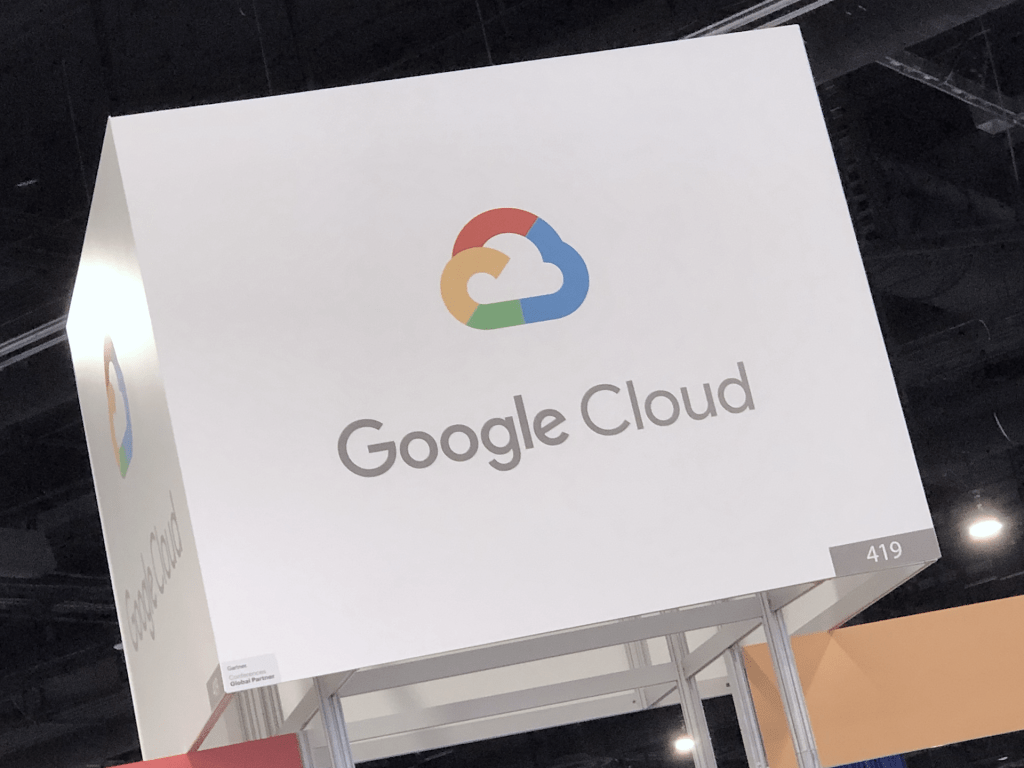
The consolidation of Google Cloud’s acquired companies under a unified security umbrella represents a significant leap forward in cloud security. This integration isn’t just about bringing different teams together; it’s about leveraging diverse expertise and technologies to create a more robust and proactive security posture than any single entity could achieve alone. This synergy has resulted in improved security protocols, innovative technologies, and a more comprehensive approach to threat detection and response.The unification has fostered a cross-pollination of best practices and security innovations from various acquired companies.
This collaborative environment allows Google Cloud to rapidly adapt to emerging threats and deploy cutting-edge security solutions across its entire platform. The scale of Google’s resources, coupled with the specialized knowledge gained through acquisitions, enables the development and deployment of security features previously unattainable.
Enhanced Data Loss Prevention (DLP) Capabilities
The integration of security technologies from various acquired companies has significantly enhanced Google Cloud’s DLP capabilities. For example, the acquisition of [insert acquired company name specializing in DLP, if available, and describe its contribution to Google Cloud’s DLP capabilities] brought advanced capabilities in [mention specific DLP features like data classification, masking, or encryption techniques]. This has resulted in more granular control over sensitive data, improving compliance with various regulations and reducing the risk of data breaches.
This enhanced DLP goes beyond simple filtering, utilizing machine learning to identify sensitive information even in unstructured data, such as images and audio files.
Improved Threat Detection with AI and Machine Learning
Google’s expertise in AI and machine learning is a cornerstone of its enhanced security infrastructure. Machine learning algorithms are used to analyze vast amounts of security data, identifying patterns and anomalies indicative of malicious activity far more efficiently than traditional methods. This proactive approach allows for the early detection of threats, significantly reducing the time it takes to respond to incidents.
It’s reassuring that Google’s acquired cloud companies are now under a single security umbrella, offering potentially better protection for user data. However, the news about Facebook requesting bank account and card transaction details, as detailed in this article facebook asking bank account info and card transactions of users , highlights the ongoing need for vigilance. This makes the strengthened Google cloud security even more crucial in a landscape where data breaches remain a significant threat.
For example, Google Cloud’s AI-powered threat detection system can identify subtle indicators of compromise that might be missed by human analysts, such as unusual login attempts or data exfiltration patterns. This proactive threat hunting capability allows for quicker mitigation of threats before they can cause significant damage.
Advanced Threat Intelligence and Incident Response
The unified security approach emphasizes a robust threat intelligence and incident response system. This system combines data from various sources, including Google’s own internal threat intelligence, open-source intelligence, and threat feeds from partner organizations. This comprehensive intelligence allows for a more accurate assessment of the threat landscape and enables proactive mitigation strategies. Furthermore, the integration of incident response teams from acquired companies has created a highly skilled and experienced response force capable of handling complex security incidents efficiently and effectively.
A standardized incident response playbook, developed through the collaboration of these teams, ensures consistent and effective response across all Google Cloud services. This results in faster resolution times and reduced impact on customers.
Competitive Landscape
The cloud security market is a fiercely competitive arena, with Google Cloud Platform (GCP), Amazon Web Services (AWS), and Microsoft Azure dominating the landscape. Each provider offers a comprehensive suite of security tools and services, but their approaches and strengths differ significantly. Understanding these differences is crucial for organizations choosing a cloud provider based on their security needs.The unification of Google Cloud’s security under a single umbrella represents a strategic move to enhance its competitive standing.
This strategy aims to simplify security management for customers, improve operational efficiency, and potentially offer a more compelling value proposition compared to its rivals. Let’s delve into a comparison of GCP’s security posture against its main competitors.
Comparison of Security Approaches
AWS, Azure, and GCP all offer robust security features, but their implementation and emphasis vary. AWS, known for its sheer scale and breadth of services, emphasizes a granular, highly customizable approach, offering a vast array of individual security tools. Azure, on the other hand, integrates security deeply within its platform, providing a more unified experience through features like Azure Security Center.
GCP, with its unified security model, aims to provide a streamlined and integrated experience, focusing on simplifying security management for customers without sacrificing granular control. This approach differs from the more individually-focused strategies of AWS and the more integrated but potentially less customizable approach of Azure.
Google Cloud’s Competitive Positioning with Unified Security
Google’s unified security model positions it as a strong contender in the market by offering a simplified, yet powerful, security management experience. This is particularly attractive to organizations struggling to manage security across multiple cloud providers or those with limited in-house security expertise. By centralizing security management and offering integrated tools, GCP aims to reduce complexity and operational overhead, a key differentiator in a market where security management can be a significant challenge.
This streamlined approach potentially appeals to organizations prioritizing ease of use and efficiency without compromising on security effectiveness.
Key Differentiators of Google Cloud’s Security Offerings, Google acquired cloud companies now come under one security umbrella
Several key differentiators set Google Cloud’s security offerings apart. Google’s long history in security, stemming from its core business of search and data management, provides a strong foundation. This expertise is evident in its advanced threat detection capabilities, leveraging machine learning and artificial intelligence for proactive security. Further, Google’s focus on open-source technologies and its commitment to industry standards and certifications builds trust and transparency.
The unified approach, focusing on simplifying security management across different GCP services, is another significant differentiator. Finally, Google’s strong emphasis on data privacy and compliance with various regulations provides a strong competitive edge.
Strengths and Weaknesses of Google’s Unified Security Strategy
The unified security strategy presents both strengths and weaknesses:
- Strengths: Simplified management, improved visibility, enhanced threat detection through AI/ML, strong focus on compliance and data privacy, potential cost savings through streamlined operations.
- Weaknesses: Potential for reduced customization compared to AWS’s granular approach, reliance on Google’s ecosystem, the learning curve for migrating from existing security solutions, and the potential for a single point of failure if the unified platform experiences an outage.
Future of Google Cloud Security
Google Cloud’s aggressive acquisition strategy, coupled with its commitment to robust security, positions it for significant advancements in cloud security. The unification of security under a single umbrella represents a major step, but the road ahead will be paved with both innovation and challenges. The future of Google Cloud security hinges on its ability to adapt to a rapidly evolving threat landscape and seamlessly integrate diverse security approaches from acquired companies.
The integration of disparate security systems from various acquired companies presents a complex undertaking. Successfully unifying these systems while maintaining a high level of security and minimizing disruption for customers will require sophisticated engineering and a highly coordinated approach. This unification will necessitate a consistent security framework, standardized policies, and robust automation to manage the increased scale and complexity.
Predicting Future Developments and Innovations
Google Cloud’s future security infrastructure will likely leverage advanced AI and machine learning capabilities to enhance threat detection and response. We can anticipate further development of automated security tools that proactively identify and mitigate vulnerabilities, reducing reliance on manual intervention. Expect to see more sophisticated threat modeling, incorporating behavioral analysis and predictive capabilities to anticipate emerging threats. This might involve deeper integration with Google’s existing AI capabilities, such as those used in Google Search and its other products, to improve threat intelligence and response times.
For example, imagine an AI system that analyzes network traffic patterns to predict and prevent DDoS attacks before they even begin, leveraging the massive datasets Google already possesses.
Challenges in Maintaining a Unified Security Approach
Maintaining a unified security approach across a diverse portfolio of acquired companies presents significant challenges. Different companies often have unique security cultures, practices, and legacy systems. Harmonizing these differences while ensuring consistent security standards across the board requires careful planning and execution. Cultural integration is key; simply imposing a uniform policy might lead to resistance and decreased effectiveness.
Furthermore, integrating different security technologies and ensuring seamless interoperability between them is a significant technical hurdle. The risk of security gaps during the integration process also needs to be carefully managed. Consider the example of a recent large-scale acquisition; the process of unifying security protocols and data governance might take years, requiring continuous monitoring and adjustments.
Evolution of Google’s Security Policies and Practices
Google’s security policies and practices will likely evolve towards a more proactive and preventative model. This will involve a shift from reactive incident response to predictive threat mitigation. We can expect increased emphasis on automation, artificial intelligence, and machine learning to enhance threat detection and response capabilities. Furthermore, expect a stronger focus on zero trust security models, emphasizing continuous verification and authorization, minimizing the attack surface.
Compliance with evolving regulatory frameworks, such as GDPR and CCPA, will also drive changes in data security and privacy practices. This might involve the development of more granular data access control mechanisms and improved data encryption techniques.
Potential Future Acquisitions and Implications
Google Cloud’s future acquisitions will likely focus on companies specializing in specific security domains, such as cloud security posture management (CSPM), extended detection and response (XDR), or security automation. Acquiring a company specializing in quantum-resistant cryptography would be a strategic move, preparing Google Cloud for future threats. For example, acquiring a leader in zero trust network access (ZTNA) would enhance Google Cloud’s security posture and attract customers seeking robust network security.
Such acquisitions would bring in specialized expertise and technologies, further strengthening Google Cloud’s security offerings. However, each acquisition brings the challenges of integration and the potential for temporary disruptions during the transition. A poorly integrated acquisition could create security vulnerabilities, negating the intended benefits.
Final Wrap-Up
Google’s decision to bring its acquired cloud companies under a single security umbrella is a bold move with far-reaching consequences. While challenges remain in integrating diverse systems and maintaining a consistently high level of security, the potential benefits – improved data protection, streamlined management, and enhanced competitiveness – are substantial. The future of cloud security is undoubtedly evolving rapidly, and Google’s strategy positions them as a key player in this exciting and crucial space.
Only time will tell the full impact of this significant change, but the initial signs point towards a more secure and integrated cloud environment.
Questions Often Asked: Google Acquired Cloud Companies Now Come Under One Security Umbrella
What are the key benefits of Google’s unified security approach for customers?
Improved data protection, simplified security management, consistent security policies, and access to advanced threat detection capabilities are some of the key benefits.
How does Google’s unified security compare to AWS and Azure?
Each provider has its strengths and weaknesses. A detailed comparison requires a separate analysis, but key differentiators include the specific technologies employed, the depth of AI/ML integration, and the overall approach to threat intelligence and incident response.
What are the potential risks associated with this unified security system?
Potential risks include complexities in integrating diverse systems, potential single points of failure, and the need for extensive retraining and adaptation for users accustomed to different security interfaces.
What kind of support does Google offer during the transition to the unified system?
Google typically provides comprehensive documentation, training resources, and dedicated support teams to assist customers during the transition. The specifics vary depending on the acquired company and the customer’s needs.
